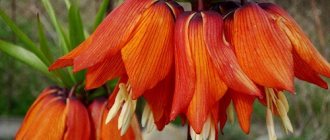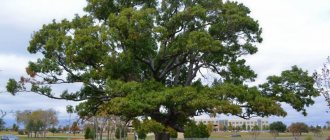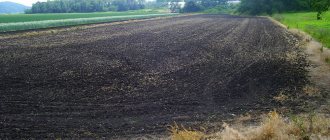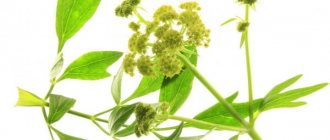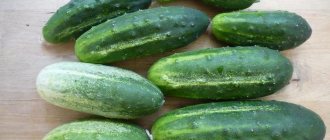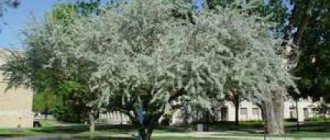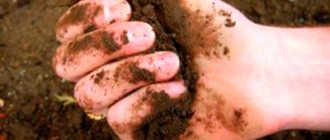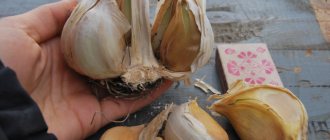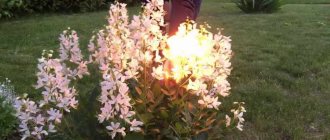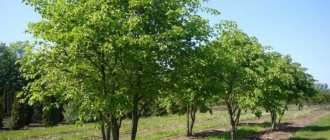Description
How to destroy mushrooms that grow on the lawn or garden?
They appear on old trees and stumps, and then the spores are carried by the wind throughout the entire area. Some mushrooms are completely safe and do not cause any harm to plants or vegetables. But there are varieties that are poisonous and can attack plants. In any case, parasites do not look very nice on a personal plot and it is better to remove them.
Those who have animals, such as dogs, should also destroy mushrooms, since there is a very high risk that they will eat the fungus and get poisoned. How to properly deal with garden parasites and what precautions you can take can be found in the article.
Special preparations
The most popular means of eliminating unwanted biological development processes in the house is impregnation from the Neomid line. This brand produces special antifungal drugs that are safe for people, but effectively eliminate harmful microorganisms. In the early stages of development of unwanted flora, you can use the composition "Neomid 430". It is suitable for indoor processing. If similar processes occur outside, then Neomid 440 is used. To eliminate the house fungus, which has long been established and continues to actively develop, covering new areas, it is worth using the antiseptic impregnation Bioshield-2. This is a composition of enhanced action, which provides a complex effect on such microorganisms. In extreme cases, a similar effect can be achieved with hydrogen peroxide, vinegar and some of the bleach solutions.
Buzulnik - elegant ligularia: growing, planting, care and reproduction
Reasons for appearance
Most often, inedible mushrooms grow on lawns and gardens, which can also be worm-bearing. Such mushrooms only pollute the area. The reasons for the appearance of unwanted “guests” may be:
- low quality lawn containing mycelium (most often mushrooms germinate in rolled lawns);
- animal urine;
- improper lawn care
- poor air circulation;
- abundant watering;
- old roots and stumps;
- spores carried by the wind.
The appearance of mushrooms on the site indicates that the land is fertile, since they will not grow in empty soil. Mushrooms, despite the fact that they can be poisonous, can form a symbiosis, as a result of which the yield is significantly increased. In addition, mushrooms are able to retain moisture, which prevents the soil from drying out too quickly. For this reason, some gardeners leave such “neighbors” on the site.
Application of fertilizers and fungicides
Fertilizers with nitrogen have a bad effect on fungal growth, so they are used to clean the lawn.
Nitrogen fertilizers can help remove fungi
Mushroom colonies are sprayed with fungicidal agents, but this method of control is considered short-lived, since after a short amount of time the mushrooms appear again. The most preferred method is to place the drug in the depressions formed around the growth of the mycelium.
The use of toxic chemicals, including herbicides, causes significant damage to the soil and destroys crops growing on it.
If mushrooms grow on the lawn, antiseptic agents will help against them:
- copper sulfate with a solution concentration of 0.2% (20 g of powder per 10 l of water);
- household dishwashing detergents, diluted at the rate of 2-3 tbsp. for 7 liters of water;
- iron sulfate, used at the rate of 10 g/l of water per 1 m2 of area.
Irina Selyutina (Biologist):
To prevent the appearance of mushrooms on the lawn, you can inoculate the soil with the so-called. grass-friendly microflora - beneficial bacteria and microscopic fungi. Lawn reanimator "Embiko" and "Baikal" are used as a source of such microflora. These preparations will “eat up” excess organic matter and turn it into vermicompost. As a result, there will be no food left for the cap mushrooms that have chosen the lawn on your site as their habitat.
Advice. It makes sense to completely “plant” the turf on mineral nutrition. Plants will absorb these fertilizers perfectly, and for mushrooms they will be out of the “access zone”. The mushrooms will begin to starve and die after a while.
How to kill mushrooms on the lawn
In order to destroy mushrooms on the lawn, several methods have been invented. But you shouldn't use them all at the same time. If one method does not help, only then can you proceed to the next one.
But, before embarking on drastic control measures, it is worth trying to change the microclimate. © https://ydoo.info/qa/kak-unichtozhit-griby.htmlTo do this, you must perform the following steps:
- In areas where mushrooms grow, the lawn should be mowed as it grows.
- Watering must be significantly reduced. Do not allow the liquid to stagnate.
- It is necessary to constantly check the area for the presence of sprouted grass, as it can begin to rot and gradually forms a favorable environment for the formation of mushrooms.
- It is necessary to remove animal excrement, as it contributes to the formation of pathogenic organisms and the proliferation of fungi in the area.
- The lawn should be well lit. The more light there is, the less chance of rot and fungi forming.
If the conditions have been created, but the mushrooms still do not disappear, then you can take drastic measures:
- Aeration and scarification. These procedures involve removing the top layer of the lawn and puncturing it to allow air to enter. Aeration can be done with regular rakes or lawn mowers. The procedure is carried out in early spring, since it is during this period that mushrooms begin to appear, and then aeration is carried out as necessary. Scarification is done using devices. There are two types. The first is a device with an electric motor. The machine is inexpensive, but it needs to be connected to the network, and this is not always convenient. The second is a device with a gasoline engine. This model is more expensive, but it is practical and much more powerful than an electric one. When carrying out scarification, the depth of the teeth should be controlled, since it is impossible to penetrate more than 10 centimeters into the soil layer.
- Liming. The lawn is sprinkled with lime along the entire perimeter. The substance reduces soil acidity and prevents the formation of fungi. Liming should be carried out at the end of autumn.
- Sanding. In the same way as with lime, but in this case the entire area is sprinkled with sand. The amount of sand should be controlled. Its layer should not be more than 3 millimeters. Sand forms a kind of drainage that prevents moisture from stagnating.
- Picking mushrooms by hand. This method is suitable if there are not many mushrooms in the area, since the procedure is quite painstaking. Mushrooms with mycelium must be removed to prevent re-germination.
- Use of fungicides. The drugs help quickly, but do not last long, so re-treatment of the lawn is often required.
The top layer of the lawn should be removed very carefully, as it may not withstand radical measures. As a result, the area has to be re-seeded with grass.
How to get rid
Change of microclimate
An unsuitable microclimate for them and regular disruption of the conditions for mycelial growth can provoke the death of representatives of the mushroom kingdom that are undesirable to humans:
- mowing grass;
- reducing the number of watering procedures to avoid water stagnation;
- removal of weeds and animal waste, which, when rotting, creates a favorable environment for the development of mycelium.
Fighting scarification and aeration
Agrotechnical measures to combat fungi growing on grass are aeration and scarification. These technologies are based on breaking the integrity of the soil and penetrating it to a sufficient depth for better passage of water and air.
- Aeration. Provides free passage of air and water to depth. The optimal time is spring. Repeat in the fall.
The essence of lawn soil aeration is to pierce the turf (the surface layer of soil penetrated by intertwined living and dead roots, shoots and rhizomes of herbaceous plants), which serves as a powerful means of retaining and absorbing moisture to a certain depth.
Typically, pitchforks are used for these purposes in small areas. As a result, holes are formed in the soil through which air enters it, and after rain (watering) water.
- Scarification. Removing dried grass stems (straw) from the surface. This is done using a simple garden rake. Sometimes you hear: “I mowed my lawn today.” This means that the owner carried out scarification, although he may not have known what specialists call this procedure. The optimal time is spring. Repeat every time you mow your grass lawn.
There is a special technique for carrying out the procedures, which is best used on medium and large areas:
- Electric aeronauts. The electrical device reduces labor costs by fully automating the process.
- Benzo aeronauts. The operating principle is similar to an electrical device for aeration and scarification. Convenience lies in the absence of the need to connect to the electrical network, which does not limit the area of movement.
Liming and sanding of soil
Mushrooms grow well in damp places and on acidified soils, therefore one of the agrotechnical methods of combating them is to neutralize excess acidity.
This is achieved by adding limestone and sand to create a drainage system. The optimal time is the end of autumn.
Distributing a layer of introduced substances from 3 mm helps to avoid moisture stagnation and will create difficult conditions for the development of mycelium.
Mechanical method
Mushrooms need to be uprooted
This method is quite labor-intensive, requires a lot of time and is effective if it is observed regularly. Recommended as an additional when applying other control measures.
When harvesting by hand, mushrooms must be pulled out of the soil along with parts of the adjacent mycelium in order to disrupt the integrity of the mycelium. This will prevent them from appearing again.
Use of fungicides and fertilizers
Fungicides are used to spray an area sown with grass, but their effect is short-term and decreases with precipitation.
The effectiveness can be increased if the preparations are introduced into the soil layer to a depth of at least 10 cm near the growing mycelium along its perimeter.
The main disadvantage of use is the detrimental effect not only on the mushroom mycelium, but also on nearby cultivated plants. Also, these chemicals have an adverse effect on the condition of the soil structure.
You can use fertilizers that also combine the ability to destroy weeds (for example, Biogard). The effect of the drug is selective, acting only on certain types of weeds.
Fighting mushrooms in the garden
If there are stumps or trees on the site, then most likely there will be mushrooms. Fighting them in the garden is not an easy task, since not every remedy can be used, and aeration is problematic as vegetable crops grow. One of the main methods of removing mushrooms is manual collection. It is best to pull out the mushrooms as soon as the cap appears.
Picked mushrooms should not be thrown into the compost pit, as they will germinate and scatter new spores. Compost is the future fertilizer. By sending mushrooms there, you risk infecting other plants.
The collected mushrooms must be placed in a bag, and when it is full, it is tightly tied and thrown into the trash container. Alternatively, you can take the bag of mushrooms outside the site and burn it.
Another option is to use nitrogen fertilizers. They will not harm the vegetable crops that grow in the garden, but at the same time they will cope well with mushrooms. Fertilizers accelerate the process of decomposition of organic matter, and the mushrooms simply have nothing to eat. Nitrogen is used at the rate of 500 grams per hectare of land. Phosphorus and potassium fertilizers will be excellent helpers. They must be entered as follows:
- First, holes are dug around the perimeter.
- Then you need to measure out the required amount of fertilizer.
- After this, nitrogen (or a mixture of fertilizers) is laid out in the holes, which are then covered with earth.
There is another effective method of fighting fungi - soap. To prepare, you will need liquid soap or detergent. Two to three tablespoons of the product should be mixed with seven liters of water. It is necessary to make indentations around the mushrooms, which should be filled with the prepared soap solution.
When removing mushrooms, you should capture not only the root system, but also the nearby layer of soil, since there is too high a chance that the area is already contaminated with spores.
Why does lawn grass turn yellow?
Violation of the rules of watering and mowing usually leads to the lawn losing its pleasant green color. But what should you do if the lawn turns yellow despite following all the instructions? The lawn has probably been attacked by pests or disease. Fortunately, methods to combat most scourges have long been developed and successfully implemented. But in order for the treatment to be effective, it is necessary to determine what exactly you will have to fight.
Fusarium
The causative agent of this disease is airborne. A distinctive symptom of fusarium is that areas of grass seem to be glued together. It looks like the lawn is covered in snow. Hence the second name of the disease - snow mold. For treatment, it is necessary to spray with Bordeaux mixture or 1% copper sulfate. Prevention, which includes procedures such as
- aeration;
- combing out felt;
- sanding.
In addition, it is very important to ensure that your fall fertilizers contain plenty of calcium.
IN THE PHOTO: Fusarium of the lawn appears in the form of “snow-covered” hummocks. Of course, the photo shows an advanced case: usually the whitish coating may not be visible, but the yellowed grass will definitely show itself later.
IN THE PHOTO: Various close-up and medium-shot versions of fusarium. As is the case with any mushroom, development begins from the center to the outskirts of the site. The center of the damage dries first.
Powdery mildew
During the summer months, a cotton-like coating appears on the lawn - this is powdery mildew. Soon it changes color from white to black. The grass affected by the disease dies. At the first signs, you should reduce watering and minimize nitrogen fertilizing. The use of fungicides gives good results. Correctly selected complex fertilizers for the lawn, taking into account the time of year, are recognized as the best prevention of this disease.
Russian black beans: characteristics of the variety and cultivation rules. Russian black vegetable beans
IN THE PHOTO: A lawn infected with powdery mildew appears to be covered in dust.
IN THE PHOTO: Unlike fusarium, powdery mildew turns the leaf silver (fusarium is a “cap” of flour or snow on the lawn). When magnified, you can see the dense whitish pubescence - as if sprinkled with flour.
Rust
Round and elongated spots of yellowish, red or black color are signs of rust. Depleted grass dies quickly. Therefore, it is urgent to treat the affected areas with fungicides (such as Skor) and mow the lawn as often as possible. To avoid disease, you need to feed the lawn in spring and summer with complex fertilizers, and in autumn with phosphorus-potassium fertilizers.
PHOTO: Lack of nutrients can cause your lawn to rust.
IN THE PHOTO: Rust is easily distinguished from other types of pathogenic fungi by the brown color of the fruiting bodies and spores. Shoes are often stained by spores if you walk on diseased grass.
Red threading
In late spring or early fall, red spots may appear on the grass. If you look closely, you can see what their filamentous spores formed. As a rule, weakened lawns that have not received fertilization get sick. It is necessary to immediately treat the affected areas with a systemic fungicide. In the future, pay attention to prevention: aeration, scarification, fertilizing. It is important to ensure that the haircut is not too short.
IN THE PHOTO: Islands of dried grass with reddish splashes are signs of a red threadlike lawn.
IN THE PHOTO: Not everyone can immediately identify red threading, much less distinguish it from other diseases. However, if you see light red threads in your lawn like in the collage above, you know it's a disease.
Anthracnose
All of these diseases affect the lawn locally. But why does the lawn grass turn yellow throughout the entire area? Most likely, the culprit is an extremely dangerous disease - Anthracnose.
It is noteworthy that signs of the disease manifest themselves differently depending on weather conditions. When the air temperature is above +25°C, impressive spots from light yellow to dark brown appear on the plants. When it gets colder, the size of the spots is much smaller, and the grass leaves become yellow-orange in color. Simultaneously with the change in color, the root system dies off. On plants you can see all the components of the fungus - the mycelium and the fruiting body.
IN THE PHOTO: Numerous bald spots on the lawn indicate the widespread nature of the disease.
If you look closely at the blades of grass, you can see black circles on them with dry, cracking anthracnose. Weakened grasses that have not received enough nutrition are susceptible to the disease. Risk-increasing factors include too short haircut, excess or lack of moisture. To prevent illness it is necessary
- lime the soil before sowing herbs;
- apply phosphorus fertilizers;
- do not exceed the norm of nitrogen fertilizers.
If, despite the measures taken, infection still occurs, it is necessary to urgently spray the lawn with Carbendazim.
Dollar spot (Dollar spot)
Parterre lawn disease. Red fescue is the most defenseless against the disease. Small spots that look like silver dollars first appear on the grass. Delay in treatment leads to the merging of these formations into untidy islands. Helping the lawn - spraying with Carbendazim. Disease prevention measures:
- aeration;
- verticulation (piercing the lawn);
- spring application of nitrogen fertilizers.
IN THE PHOTO: Light spots similar in size to a dollar are signs of Dollar spot disease.
Precautionary measures
No control method can give a 100% guarantee that mushrooms will no longer germinate on the site. After all, it is impossible to verify whether spores were released or not. The best methods for controlling fungi are prevention and precautions:
- A good drainage system that will remove excess water.
- Regular loosening of the soil for normal air circulation. It is also worth digging up the garden in spring and autumn.
- Provide good lighting of the area. Mushrooms love dampness, but do not like light. Sunlight is harmful to many pathogenic organisms, and fungi are no exception. If there are tall trees on the site, then it is necessary to trim the branches.
- Timely weed control. This also applies to old snags, which not only clog up the area, but also become a home for mushrooms.
How to get rid of mushrooms in your summer cottage
Mushrooms look great as an original decoration for lawns, but they can become a potential danger to children and pets, so the problem of how to deal with mushrooms in a summer cottage often arises. Banal pulling out mushrooms and digging up the soil does not lead to a long-term effect; moreover, if you do not follow the “safety precautions” rules, you can increase the area of mycelium infestation.
Are mushrooms useful or harmful in a summer cottage?
Mushrooms can settle in absolutely any area, and the usefulness or harmfulness for garden and vegetable crops is constantly discussed. So, before you get rid of mushrooms in your summer cottage, it’s worth finding out how mushrooms affect your garden:
- In most cases, fungi form a symbiosis with other representatives of the plant world, and they do not cause much harm, and only a number of species of fungi are capable of causing diseases in plants.
- The overgrown mycelium is able to retain and accumulate moisture, so where mushrooms grow, increased soil moisture is found, which is extremely important for some garden crops. But this same excess moisture can negatively affect the fruitfulness of a number of vegetable crops. For example, tomatoes with excess moisture begin to get sick, but cucumbers simply “thirst” for water.
- Most fungi take over old stumps, branches and accumulated leaves, “processing” them into minerals that are easily accessible and easily digestible for plants. But mycelium is difficult to control in growth, so the problem of how to get rid of mushrooms in a summer cottage is relevant to control the spread of mycelium so that healthy trees and shrubs are not infected.
- Mushrooms are a sign of active rotting in the area, so uninvited wild guests (hedgehogs, snakes, mice and other small pests) can settle in places where they grow, which will add trouble and are carriers of dangerous diseases. Ignoring the appearance of mycelium creates more dangers for children and pets. In addition, the rapid growth of mycelium can lead to complete contamination of the area, which will be much more difficult to cope with.
Such reasons are quite enough to keep the growth of mycelium under control and even get rid of it, if the goal was not to grow an edible mushroom.
Creating an unfavorable microclimate
Changing the environment and creating a microclimate unfavorable for fungal colonies is one way to get rid of mushrooms on the lawn. To do this, regulate air circulation and humidity levels in the deep layers of the soil, which involves:
- mowing the grass as it grows in areas where the mycelium has sprouted;
- keeping watering to a minimum, because excess water accumulated in the ground acts as a favorable environment for growing mushrooms;
- removal from the site of all remnants of vegetation that are susceptible to decay processes, including those left behind by dead trees, stumps, dead rhizomes, humus, biological debris, etc., because rotting creates comfortable conditions for the growth of mycelium;
- regular removal of animal excrement;
- increasing the illumination of the area by thinning the plantings, creating the greatest distance between tree branches..
Popular ways to deal with mushrooms in your summer cottage
The task of how to get rid of mushrooms in a summer cottage is more complex in nature, because there is no single method with a long-term effect, and all actions can be divided into two categories: creating negative conditions for the growth of fungi and actively destroying the mycelium. Measures to combat fungi in a summer cottage:
- Do not allow the fungus to grow, but pull it out of the ground when it appears directly through a plastic bag and take it outside the site. Leaving the fungus on the site (for example, in compote heaps), as well as its growth before ripening, spreads spores and infects the site more.
- You can remove the entire turf layer and place it on a pile for subsequent treatment with active chemicals. This event also includes a complete cleaning of the area from fallen leaves, rotting branches, and especially stumps. Maintaining “cleanliness” and order in the area is the key to destroying the mycelium.
- The mycelium loves high humidity and shading, which means it is necessary to trim the branches shading the area and drain the soil using one of the convenient methods. Large digging of the earth leads to active removal of moisture. If moisture accumulation occurs due to hydrological features, then it is necessary to organize drainage of the area.
- Chemical effects on the mycelium, and there are two ways: the use of specialized chemicals that “burn out” any living organisms, and the use of mineral fertilizers and general-purpose preventive solutions. Acetic essence, Bordeaux mixture, copper sulfate and even soap solution actively suppress the growth of any fungi and mold, so periodic use has a positive effect on the entire garden plot. Active application of mineral fertilizers with correction of soil composition also effectively suppresses rotting, which is important for the growth of the fungus, and makes the soil fertile.
It is worth noting that even after completing the entire range of measures, the fight against mushrooms in a summer cottage will not end for one season, because remnants of mycelium and spores may appear as early as the next year, so it may take several years for complete destruction. Of course, such labor-intensive and active actions will not be required later, but periodic use of chemicals and loosening of the soil are mandatory even for vegetable crops.
How to get rid of mushrooms on the lawn
Many owners of dachas and cottages are often faced with the problem of yellowing lawn grass, or even the appearance of mushrooms on it. This can happen unexpectedly, even if your lawn has been maintained regularly. This trouble can happen either at the end of spring, when the first warmth arrives, or closer to autumn, when the rainy and cold season begins. Why does this happen, why do mushrooms grow and how to “remove” toadstools from the lawn? What to do if mushrooms appear on the lawn? Do I need to remove them myself? This article will help you understand all the nuances.
Mechanical cleaning
Moss can be removed from small lawns with a rake.
On large lawns, it is better to use mechanized devices - verticutters. Their second name is scarifiers. These actions stimulate the vigorous growth of living plants. The hummocks are destroyed, the grass cover becomes thicker. The lawn is verticulated twice a year - at the beginning of the gardening season and in the second half of summer. The last treatment can be postponed to the beginning of autumn.
It is not recommended to make deep cuts right away: first, the knives are set to a shallow depth. It is increased if the first treatment gave an unsatisfactory result.
Source
Mushrooms on the lawn: causes and conditions for their appearance
What types of mushrooms can grow on the site? In the best case, these will be champignons or other edible mushrooms, whose spores have somehow gotten into the soil; they can simply be collected and thrown away or eaten. But most often, toadstools grow on the lawn, which can be very dangerous. Under no circumstances should they be left to grow further, especially if the family has pets and children. It is definitely necessary to get rid of poisonous mushrooms and destroy them.
Possible causes of toadstools and yellowing of the lawn
- Improper laying or sowing of the lawn, purchasing low-quality grass mixtures or rolls. In cheap rolled lawns, mushroom mycelium may be present when sold, as well as in poorly processed seeds.
- Pet urine. If the red spots are small in size and appear for no apparent reason, then you should suspect pets (if you or your neighbors have them, of course). Urine contains concentrated nitrogen, which gives green grass its yellow color.
Mushrooms appeared on the lawn in spring
How to grow mushrooms on the lawn
What to do if toadstools still grow on the lawn? How to get rid of mushrooms on the lawn? There are many different options for how to deal with the problem, which it is advisable to use together with each other.
Microclimate change
First of all, in order for the mushrooms to feel uneasy on the site, you need to create an unfavorable climate for them. To do this you need to do the following:
- mow the lawn as it grows in those areas where mycelium grows;
- reduce the amount of watering so that there is no excess water left in the ground;
- regularly remove from the site all vegetation that can rot, namely stumps from dead trees, organic debris, foliage and rotten roots;
- remove animal excrement and limit their further appearance on the lawn;
- increase the level of lighting in the area, plant nearby trees and shrubs.
Aeration and scarification
These procedures involve removing the top layer of soil and piercing it to improve the absorption of water, minerals and oxygen. Aeration can be carried out with a simple rake or devices specially designed for this. This is done at the beginning of spring, and then regularly after every second mowing of the lawn. Scarification is necessary for better access of air and water to depth; it is carried out in the spring at the beginning of the summer season, then again at the beginning of autumn.
Aeration and scarification
As for special devices for this procedure, there are the following:
- electric aeronauts. They work very effectively, but are also quite expensive. The process with such a device is fully automated and working with it is much easier and more pleasant than with a conventional rake;
- gasoline aeronauts. Today they are considered the most convenient and effective. They work in the same way as electric ones, but do not require a connection to the network, which allows you to move freely around the site while working.
Liming and sanding
When liming, the soil is enriched with limestone, which reduces the acidity of the soil, preventing fungi from growing on it and helping to destroy them. This measure should be taken at the end of autumn.
Sanding involves spreading sand on the surface of the earth in a layer of 3 mm; you can also mix it with lime. This procedure helps to create a proper drainage system that will not allow moisture to stagnate in the depths.
Manual collection
The procedure is painstaking and not always pleasant, but still, if you do it regularly, the number of mushrooms will gradually decrease and disappear over time. You need to go around the entire area and pull out every mushroom found.
Note! Mushrooms need to be pulled out by the roots to damage the mycelium as much as possible.
Application of fungicides and fertilizers
To clean the lawn, you need to use fertilizers containing nitrogen, they will help reduce the number of growing fungi. Fungicides are intended for spraying fungal colonies, but they do not help for long. It is better to lay them deep in the ground around growing myceliums.
Important! Chemical solutions can destroy not only mushrooms, but also crops growing within the spray radius, also harming the soil.
Traditional methods
Among the folk methods of exterminating mushrooms is the method of using antiseptic drugs. They can also help get rid of the problem. To do this, you need to dilute one of the products suggested below in 10 liters of water and pour it over the entire area from a long watering can:
- 20 grams of copper sulfate powder 0.2%;
- 100 grams of iron sulfate;
- 4 tablespoons of regular dishwashing liquid.
All these measures are aimed at achieving complete elimination of brown toadstools.
But there are also extremely advanced cases of lawn infection that require special additional measures, namely, serious treatment of the soil. The main signs of this are:
- some areas have become too dry;
- to make matters worse, they turned dark;
- and the most unpleasant thing is that part of the lawn has completely ceased to have vegetation.
Such areas are popularly called “witch circles”; they portend a big problem. Ideally, in such a situation, it is necessary to remove the top layer of soil (10 cm or more), then fertilize it well, and only after making sure that the mycelium no longer lives on the site can you sow a new lawn. Next, you just need to take good care, preventing yellowing of the lawn and the growth of new mushrooms.
Here, perhaps, is all you need to know about the reasons for the appearance of mushrooms on the lawn and about measures that will help avoid this in the future. The main thing is to properly care for the site and keep it in order.
Plot
69 votes
+
Vote for!
—
Vote against!
Mushrooms on the lawn are a fairly common occurrence. Some of their varieties are quite edible. However, you should not imagine a frying pan with fried mushrooms, since usually it is not saffron caps and boletus mushrooms that sprout on the lawn, but simple white or gray mushrooms, which are often called parasitic. Let's talk about the danger they pose and how to deal with this phenomenon.
Table of contents
- Mushrooms on the lawn - causes
- What are the dangers of mushrooms on the lawn?
- What is required to carry out work to remove mushrooms from the lawn?
- The other side of the issue is the benefits of mushrooms for the lawn
- Using mushrooms to decorate the lawn
Mushrooms on the lawn - causes
Gardeners often notice that mushrooms begin to actively appear on the lawn after rains. As a rule, the cause of mushrooms is excessively damp or acidic soil, which leads to their germination. At the same time, you should know that mushrooms grow only in healthy soil and a favorable environment, which in itself will be an indicator of the quality of the soil. Moreover, mushrooms that often grow are a good addition because they can produce substances that are beneficial to the soil. Their excess contributes to the appearance of affected areas on the lawn, which will later lead to problems and the need to take urgent measures to revive the lawn surface.
If there is poor air or moisture circulation on the lawn, this will be another likely cause of fungus. However, it is useful to know that mushrooms will not appear on those lawns that are constantly well maintained and undergo timely soil cleaning procedures.
What are the dangers of mushrooms on the lawn?
First of all, it should be noted that not all varieties of mushrooms are dangerous. The question of the need for immediate destruction of fungal germs is often raised due to the aesthetic component. since some would prefer the lawn to have no extraneous “neighbors.” The situation becomes more complicated if “witch rings” have been noticed, which are areas with darkened grass, noticeable against the general background. Then lawn care begins with reducing the level of soil saturation with useful organic fertilizers, which provoke the rapid germination of mycelium.
The reason for their appearance is not a mystery: fungal spores, which easily move through the air, when they get into the ground, are able to germinate in thin threads deep into the soil. This creates the basis for the formation of mycelium, which is also called mycelium. In fact, this is the subsoil part, the growths of which are called mushrooms. The mycelium grows evenly around the circumference, reaching up to 30 cm per year.
In those places where dark rings form, the process of gradual death of the grass begins and the growth of new ones slows down. If areas of sprouted mushrooms appear on this ring, in particular talkers and meadow mushrooms, you must be wary of the fact that these varieties are capable of releasing a significant amount of hydrocyanic acid, which poses a danger to humans and, if released into the soil, leads to the destruction of the grass lawn.
What is required to carry out work to remove mushrooms from the lawn?
Experts identify several methods for combating germinating mushrooms, and each of them is effective in its own way. First of all, the increase in the population of fungi is facilitated by their spread through the spread of fungi. It is worth giving an example by analogy with a blooming dandelion - if it is damaged, the seeds will be scattered by the wind across the area. Therefore, to combat fungi, the following actions are recommended: soil aeration.
- The essence of this method is that the top layer of soil is pierced to ensure uniform distribution of mineral fertilizers, water and air to the roots of the grass. Aeration must be carried out both using simple rake-aerators, with a base width of at least 30 cm, and using special equipment, such as an electric or gasoline aerator. For manual work, we recommend an aerator rake from the manufacturer Fiskars, which over several decades has earned a reputation as a good and reliable tool. The cost of such rakes is on average $30, they are made of high-quality hardened steel, resistant to corrosion.
- Electric and gasoline aerators are more efficient in operation, but usually have the same width of land coverage. The price for electric models starts from $80 for budget options with a power of 1200 W, for gasoline models the average price is $450. If you choose a good quality electric aerator, then the leading position is occupied by the ES-1500 model from the Sadko company, which is manufactured in Slovenia. In fact, this equipment is not a simple aerator, but a scarifier - that is, it allows for a more effective impact on the lawn by loosening the soil. Instead of hollow teeth, sharp blades enter the soil, which make cuts on the roots of plants, resulting in uniform density and good grass growth. It should be noted that the described Fiskars hand rakes also have a blade base.
- Gasoline models are noisier and do not show any noticeable superiority compared to electric ones. Gasoline ones have comparatively better autonomy and power, but for amateur purposes their use is not a priority, since the price of even budget gasoline aerators is noticeably more expensive than electric ones. The leaders among gasoline models are representatives of equipment from the Husqvarna and Bosch brands.
However, whatever the choice, it is necessary to adhere to the basic principles when aerating the soil:
- the lawn is aerated after every third mowing,
- It is advisable to carry out scarification two to three times a year, at the beginning and end of the summer season,
- Do not immerse the blades or teeth of the aerator into the ground more than 10 cm.
This procedure does not require frequent repetition, and nevertheless, it is able to maintain the soil in good condition, which will avoid the germination of fungi.
The second effective method will be the use of organic fertilizers in combination with antiseptics. For example, the use of copper sulfate is advisable and economically justified, since this substance is a compound of copper and sulfur and is both a fertilizer and an antiseptic. To rid the lawn of unwanted mushrooms, you need to periodically spray it with a prepared 0.2% solution, that is, dilute 20 grams of vitriol powder in 10 liters of water.
The use of serious chemicals such as herbicides will not lead to a guaranteed result in removing fungi, but can cause severe damage to the soil and grass layer. It would be more correct to use nitrogen-based organic fertilizers, which are safe for the earth. Methods to combat fungi on the lawn
In addition to these means, it will be useful to consider other options for how to destroy fungus on the lawn:
- Reducing watering and fertilizer dosage will reduce the growth of fungal compounds. Most often, it is excess water and minerals that promote the germination of “pests”.
- It is best to remove mushrooms by hand, carefully cutting them off at the base. The place of germination must stop watering for a while, since the mycelium tends to grow in moist soil.
- Cleaning the soil surface from biological debris and humus will remove the most favorable environment for fungal growth.
- Old roots and stumps must be removed, since mushrooms often grow on them.
- In mid-autumn, before the end of the summer season, it makes sense to sprinkle the lawn with fine-grained sand, which will have a beneficial effect on the condition of the soil.
It is worth paying attention to the fact that it is not enough to remove external consequences; it is necessary to find the source of the problem. There is an opinion that removing the top fertile layer of soil 10 cm thick will allow you to remove the soil contaminated with mushrooms and probably find the mycelium itself.
Lawn grass will not withstand such a radical solution, and after processing the land will have to be re-sowed. Despite this, removing the top layer of soil most often does not give the desired effect, since mycelium typically germinates at a depth of more than 50 cm. Providing protection from fungi and caring for a rolled lawn is more difficult due to the requirement to constantly provide aeration every four months.
The other side of the issue is the benefits of mushrooms for the lawn
However, it is also important to know that the presence of mushrooms on the lawn has a beneficial effect on the soil. They serve as a kind of ecological system for processing organic waste, releasing useful minerals and moisture.
Plants germinate better with mushrooms, since the latter supply their root system with beneficial sugar compounds. Often the presence of mushrooms has a positive effect, and only exceeding the required level of substances beneficial to the soil will lead to the appearance of “witch’s rings”.
Using mushrooms to decorate the lawn
Moreover, sprouted mushrooms often have a rather attractive appearance that can raise the level of beauty of the garden. It is often recommended to independently grow small mushroom plantations of those species that are suitable for food - which will be both useful and quite beautiful.
Many manufacturers offer the option of purchasing artificial mushrooms made of ceramics, plastic, and rubber for their subsequent placement around the territory. Such a solution will give the site a truly cozy look.
In addition to offers to purchase at a price of $1 for a decorative mushroom made of concrete, you need to pay attention to the fact that creating an artificial mushroom with your own hands is quite easy. For example, this will require either construction foam with a sheet thickness of 10 cm, or polyurethane foam, which is sold in cans and is usually used to seal seams during construction.
A mushroom made from polyurethane foam is constructed according to the same principle as other crafts made from it:
- First, take the base for the mushroom stem, which can be used as a simple plastic bottle,
- the cap is made of a convex surface. A small plastic basin, suitable in size to the base, works well for this.
- the main elements are foamed with foam, which is applied in several layers,
- the base and the cap are fastened together either with glue or nails,
- when carrying out work, remove excess with a sharp knife,
- after the mushroom has taken shape, it must be primed, then covered with putty,
- after drying, the finished craft is covered with several layers of paint,
- The final step will be to cover the surface of the painted mushroom with a layer of varnish, which will provide additional protection from the sun and shine of the surface.
This method of creating an artificial mushroom is best used for large-sized crafts. However, this does not mean that using foam you cannot create small mushrooms to frame larger ones. For small structures you need to make a frame base. For example, from a handle and a lid from a coffee can, and then the manufacturing technique is the same as for large crafts.
It is better to create small decorative mushrooms using polystyrene foam. Blanks for future crafts are cut out of a single piece and then, using a sharp knife, the excess is trimmed and the crafts are given the correct shape. After these steps, the manufactured figures are sanded with fine-grained sandpaper and painted with acrylic paint in the desired colors.
As you can see, the presence of mushrooms on the lawn can prompt a set of measures to clean up the soil, but also the desire to give the area an attractive and cozy look thanks to the possibilities of decorating the area with such crafts.
If you have toadstools growing in your garden, rejoice or immediately sound the alarm
It happens that on good fertile soil, toadstools grow on the site. Many are concerned about this phenomenon, how dangerous is it and what to do about it? Let's figure it out together.
Positive aspects of growing mushrooms in garden beds
– On poor soil, not rich in humus, mushrooms will not grow
– Mycelium (mycelium) retains moisture in the soil
– Fungi are involved in the processing of organic matter and form a symbiosis with plant roots
As we can see, there are quite a lot of positive aspects that various mushrooms have settled in your garden.
However, there are also several disadvantages
– This is a ruined appearance of the flower beds. Judge for yourself that a beautiful flower bed with magnificent flowers and the proximity of toadstools are not compatible.
– The appearance and growth of toadstools on a personal plot is a signal that the soil is becoming acidic and will have to be deacidified
Toadstool mushrooms have grown in the garden - what to do?
Some gardeners, walking around their land, notice the appearance of toadstool mushrooms on the plot. They can grow near beds, near greenhouses or even in a flower garden, and their appearance will noticeably spoil its appearance.
What to do in this case and should you be afraid of such “neighbors”? I propose to deal with these issues in this article.
So, first of all, of course, I will hasten to reassure you - there is no particular harm
Toadstools will not bring you, nor the plants, nor their fruits.
Having noticed such mushrooms in your garden, you can, on the contrary, breathe a sigh of relief, since they are considered real indicators of soil fertility.
If the soil on your plot was bad, then toadstools would never grow on it - that’s a fact. In general, mushrooms can be an excellent addition to fertile soil, since they take an active part in the processing of organic matter.
But not everything is as “smooth” as we would like - toadstools signal that the earth has become acidic
, so it is important to take appropriate measures to deoxidize it.
In this matter, the best “helpers” will be dolomite flour and lime, which will help you quickly normalize the soil composition and get rid of unwanted mushrooms. But this process can also be quite complicated, since the mycelium can be quite long (the length of some myceliums reaches 10 m).
In order to achieve the desired result, it is recommended to simply replace part of the soil on which the mushrooms grew with a new one. To do this, you need to remove its top layer and take it outside your territory, and the remaining soil will only have to be dug up, after adding deoxidizing agents (they were listed earlier).
For greater effectiveness, it is also recommended to treat the area cleared of mushrooms with a solution of copper sulfate.
, which will consolidate the result and prevent the appearance of toadstools in the future.
So, if you ever find toadstools in your garden, don’t worry - they won’t do any harm, and most importantly, getting rid of them won’t be at all difficult!
Source
How are toadstools useful in the garden?
Mushrooms appear in the beds in the vegetable garden, in the greenhouse or in the flower garden, which differ in both appearance and size. They begin to grow after prolonged rains at high daytime temperatures. Most often these are toadstools. They appear under film cover in greenhouses and greenhouses, where favorable conditions are created for them - humidity and warmth. They like to grow on old stumps or trees and from them, with the help of spores, they move to the garden.
Why do toadstools grow
Every owner of a garden or vegetable garden wants to have a well-groomed area, but when toadstools appear on the area, the appearance deteriorates. They grow in garden plots when the soil is too moist or has high acidity. We can safely say that the soil on which mushrooms suddenly grew is healthy and favorable for plant growth, since they will not grow in poor soil. They are also able to enter the site along with fertilizers brought from other places.
It’s just that even toadstools won’t appear in the garden. It is with manure that spores are introduced. The wind also brings seeds from neighboring areas or old trees growing nearby.
The appearance of toadstools among vegetable beds does not evoke pleasant emotions. This applies to those owners of summer cottages who have children or pets. Everyone is trying to quickly get rid of these mushrooms as they can be very poisonous, cause swelling of the mucous membranes, etc.
Problems with lawn pests
Earthworms
The lawn can suffer not only from diseases, but also from attacks by pests. The first place on the list of enemies of lawn grass is occupied by earthworms. The same invertebrates that drain the soil and are considered a gardener's best helpers can disfigure the lawn. Their waste products inhibit thin-leaved plants. Mucous secretions along with lumps of earth are trampled down during mowing, which results in the appearance of bald spots on the lawn. In addition, excrement often contains weed seeds. To expel pests you need to:
- Immediately remove cut grass;
- regularly acidify the soil (mulch with peat and apply fertilizers containing ammonium sulfate );
- After heavy watering or rainfall, collect the worms and take them into the garden.
IN THE PHOTO: Worms do not like acidified soils, so mulching the lawn with peat is the best prevention against these pests.
Moles
It is also necessary to get rid of earthworms because moles love to eat them. Attracted by easy prey, the animals quickly settle into a new place. On “their” territory, they break through long underground corridors, throwing earth out. As a result, mounds of soil rise here and there on the site. They must be removed immediately so that the soil does not press down the vegetation. Bare areas should be covered with turf or re-seeded.
To protect lawns from moles use:
- traps;
- ultrasonic or homemade repellers;
- smoke bombs.
It is also possible to use pesticides. But they can only be used by professional services.
As a rule, people start thinking about how to protect their lawn from moles after the animals have invaded. If you take preventive measures, you can save yourself from unnecessary hassle and expense. It is recommended that before laying out the lawn, cover the entire area with a lawn net and cover it with soil. An insurmountable barrier will force underground predators to search for another place to live.
IN THE PHOTO: With such a backing for the lawn, moles don’t stand a chance!
Lawn mesh against moles:
- resistant to aggressive environmental influences;
- does not rust;
- environmentally friendly;
- durable (service life - 30 years);
- protects the soil from erosion.
May beetle larvae
For areas with newly planted lawns, chafer larvae pose a great danger. Tender plant roots cannot always resist these pests. The voracious creatures become active in the spring and summer, continuously destroying plant roots. The grass turns brown and is easily pulled out of the ground.
IN THE PHOTO: May beetle larvae are especially dangerous for young grass.
The main reasons for the appearance of larvae:
- excessive watering of the lawn (daily);
- uncollected grass clippings (larvae are attracted by the smell of straw);
- weakly rooted cereals.
Insecticides are used to kill pests. The biological drug Nemabact gives excellent results. Its basis was a predatory nematode that eats larvae. The same means are suitable for combating another enemy of the lawn - the larvae of long-legged mosquitoes.
Long-legged mosquito larvae
Dark gray creatures begin to eat the roots and stems of lawn grass from the moment they appear. Their activities result in the widespread formation of disgusting bald spots. Drainage and aeration of the site will help prevent pest invasion. In uncomfortable conditions, most of the larvae die.
Benefits and harms
The fungus enhances the biological activity of the soil. It is useful for a tree when there are a large number of toadstools growing under it. Back in school, in biology lessons, it was said that fungal cultures can enter into a symbiotic relationship with plants. Thanks to this, the nutrition of tree roots is significantly improved. They have the property of releasing antibiotics into the soil that kill infections and fungal diseases.
So, toadstools in the garden and their positive aspects of growing in the beds:
- Makes the root system stronger and contributes to its better nutrition.
- Guarantees the crops an influx of additional moisture from deeper layers of the soil.
- Significantly increases the amount of nutrients in the soil.
- Intensively decomposes plant residues and turns them into fertilizers.
- Mycelium acts as a preventative against plant diseases.
- Increases the intensity of plant photosynthesis.
However, there are also several disadvantages:
- Appearance. Toadstools do not look good next to flowers or vegetables.
- The appearance and growth on a personal plot is a signal that the soil is becoming acidic and will have to be deacidified.
When children or animals often visit the garden, it is necessary to protect them from these poisonous specimens. You can surround the area where the toadstools grow with a chain-link mesh or install other decorative fencing.
Ways to spread mushrooms and how to get rid of them
The peculiarity of mushrooms is that they reproduce using spores; their number is in the billions. They spread mechanically, by wind, rain, and are carried by animals and insects. Everything around – air, soil, water – is filled with spores. They are well tolerated by animals. This is why mushrooms can end up in any, most unexpected place. As soon as the spores fall into soil favorable for them, they will immediately begin to grow.
But if mushrooms haunt the gardener, then you need to get rid of them and there are several ways to do this. You need to immediately be prepared for the fact that it simply won’t happen. It will take a lot of time and effort to get rid of such a neighborhood:
- First, you need to clear your garden plot of old stumps and trees in which mycelium has appeared.
- It is necessary to remove the top layer from the soil and dig it up with the addition of a large amount of ash.
- You can use chemicals that are gentle on other plants to get rid of toadstools. Such means include salt; you can sprinkle it on the cracks where mushrooms were noticed.
- Treat with vinegar essence, lime and Bordeaux mixture.
To prevent mushrooms from appearing again, it is necessary to monitor the moisture and acidity of the soil.
Mushrooms growing in the garden can make a gardener wonder if everything is okay. Often the first reaction is to get rid of the toadstools, but specimens that have settled in the garden or vegetable garden become signs of healthy soil containing large amounts of organic matter. Beautiful works of nature, mushrooms are extremely beneficial for the garden. This is a supermarket for plants, so don't try to get rid of them quickly.
